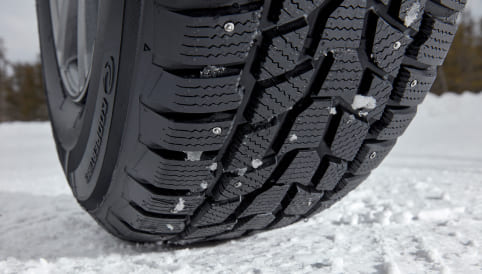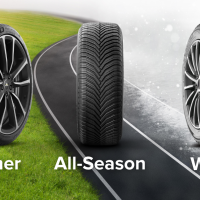How Do I Break In Winter Tires?

How Do I Break In Winter Tires?
Whenever installing winter tires, drivers should recognize that the personality and handling traits of winter tires will feel different than the summer or all-season tires being replaced. Since winter tires are dedicated to providing more traction in snow and on ice, extra care should be taken by drivers to familiarize themselves with their vehicle’s traction and handling characteristics.
New winter tires begin with deeper tread depths and more open tread designs than the tires used during the rest of the year. While the extra tread depth allows new winter tires to provide more traction in deep snow, it also contributes to more tread squirm and drivers may notice a reduction in handling responsiveness.
Most winter tires also feature softer tread compounds that remain pliable in extreme cold temperatures. The most popular winter tires feature speed ratings that are typically lower than the speed rating of the tires fitted to the car for the rest of the year. Regardless of the winter tire’s speed rating, the speed at which the vehicle is driven cannot exceed the speed rating of the winter tire used.
Before tires are cured, a release lubricant is often applied to prevent the tires from sticking in the mold. Unfortunately, some of the lubricant stays on the surface of the tires, and traction is reduced until it is worn away.
Tires are comprised of many layers of rubber, steel and fabric that require a break-in period to assure they achieve their maximum performance and your maximum satisfaction. A few hundred miles of easy acceleration, cornering and braking…at no more than legal speeds will allow all of those components time to get used to working together while the mold release lubricant wears off.
The following applies to studded winter tires only:
Looking like carpenter nails with their shafts cut short before being inserted headfirst into the tire, winter studs are made by encasing a tungsten carbide pin into a cylindrical metal housing. Typically 80 to 100 studs per tire are inserted into small holes molded in the tire’s tread design. The tread is often lubricated (a 2% soapy water solution is desired) to facilitate installation. A special tool spreads the rubber and inserts the stud into the bottom of the hole. Once the stud is in place, the tool is removed and the tread rubber compresses around the stud’s flat head and cylindrical housing to hold it in place.
Because it takes some time for the lubricant to evaporate and the tread rubber to compress around the stud, studded tires require a special break-in period. Relatively slow driving (less than 31 mph/50 km/h) without hard acceleration or braking is recommended for the first 62 miles (100 kilometers). This will allow the lubricant to evaporate and the tread rubber to conform to the shape of the stud.
Studded winter tires are not recommended for high speed driving because high speeds (as well as excessive tire spinning) can cause studs to be ejected.

























